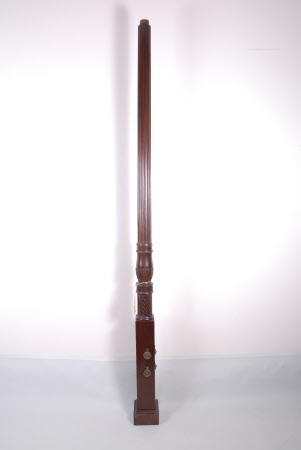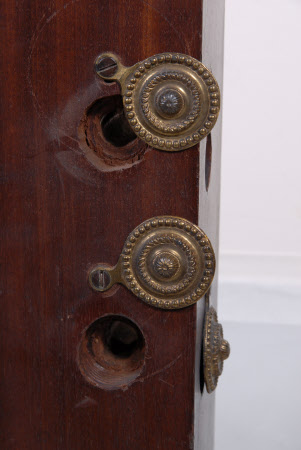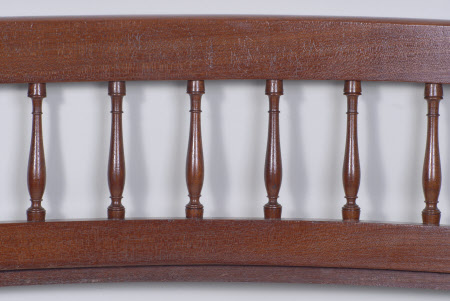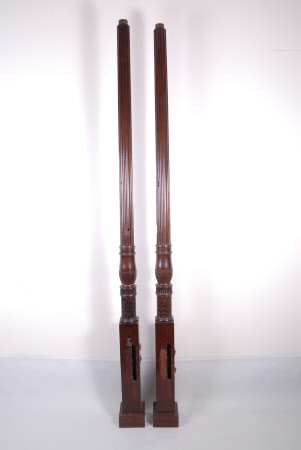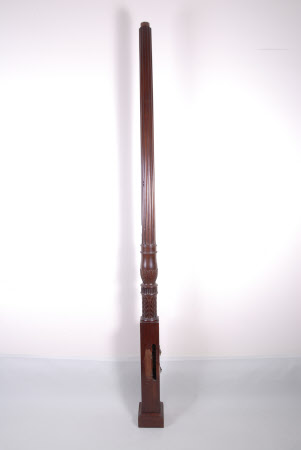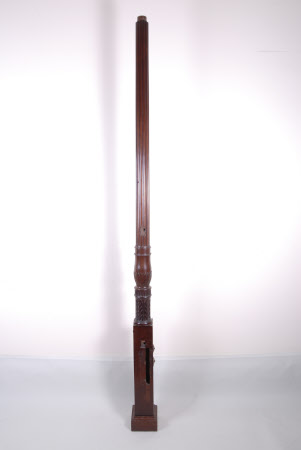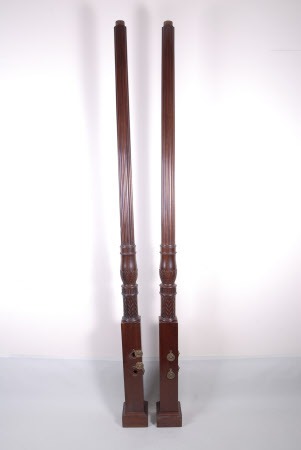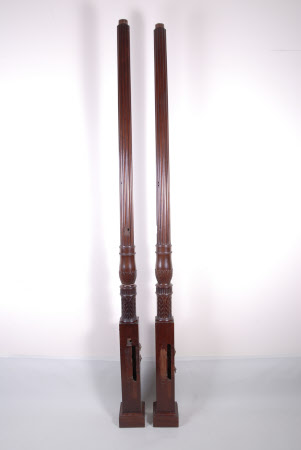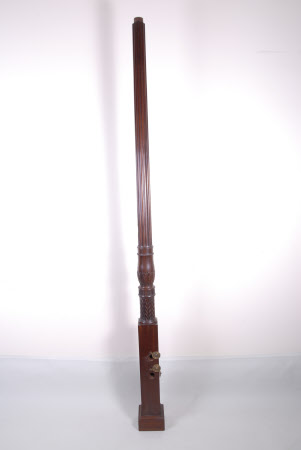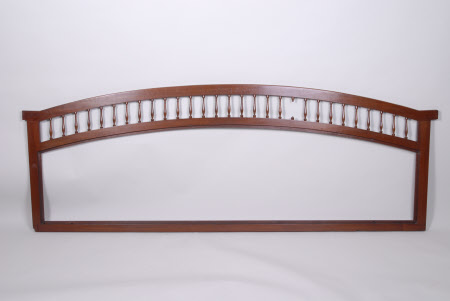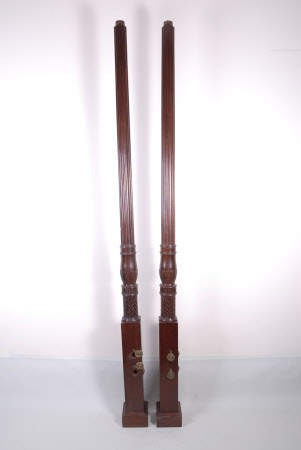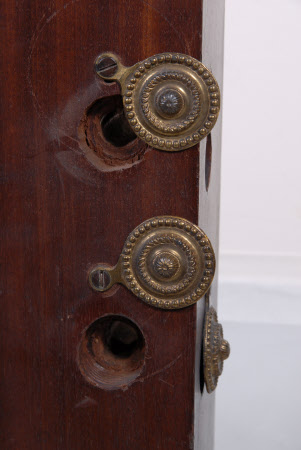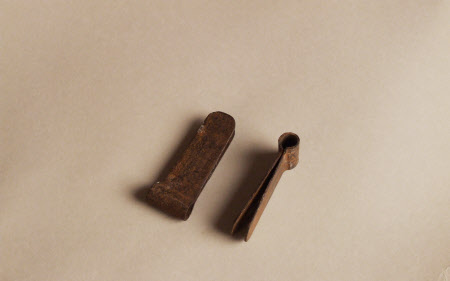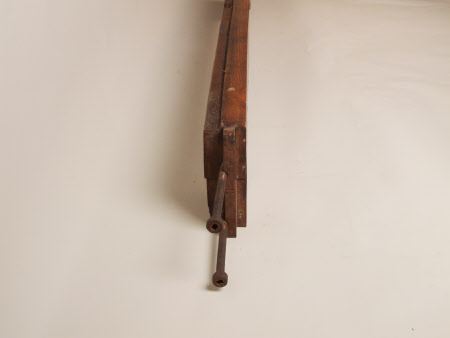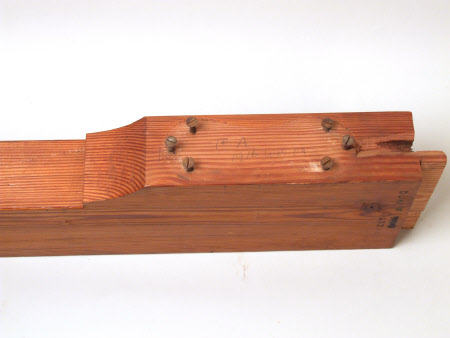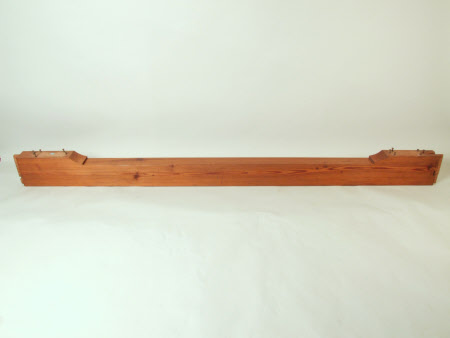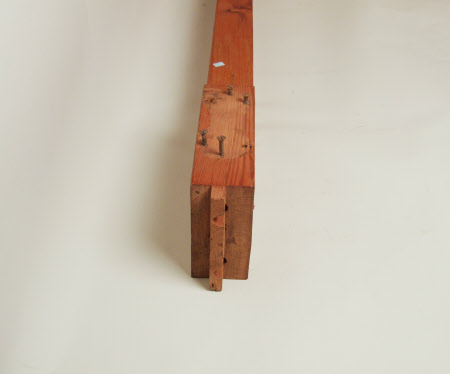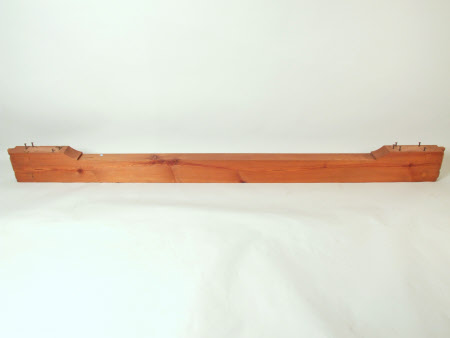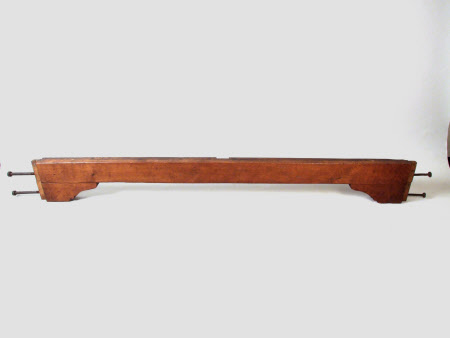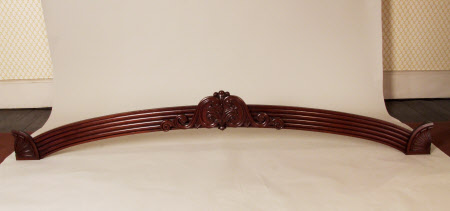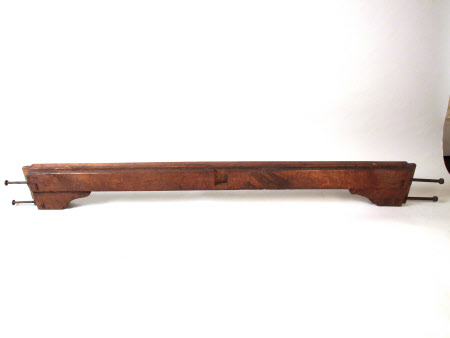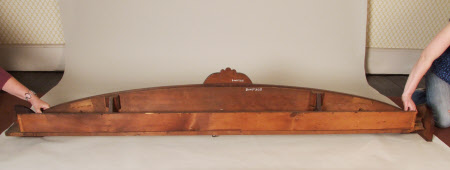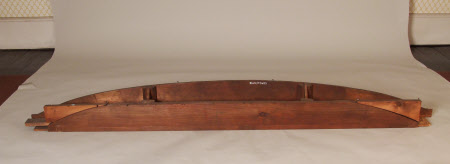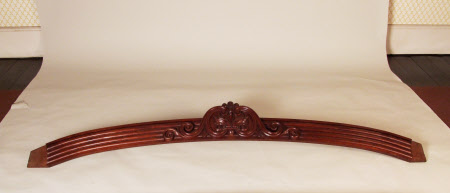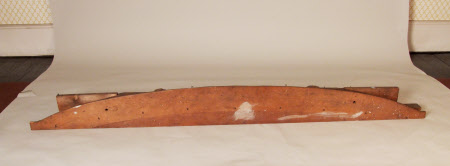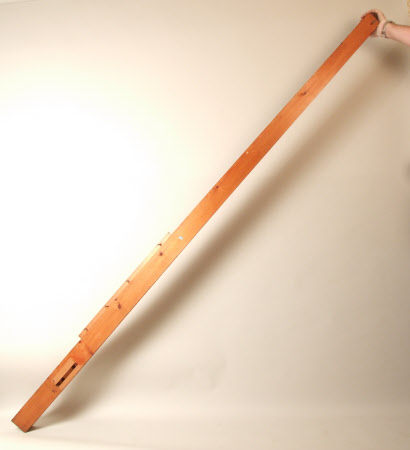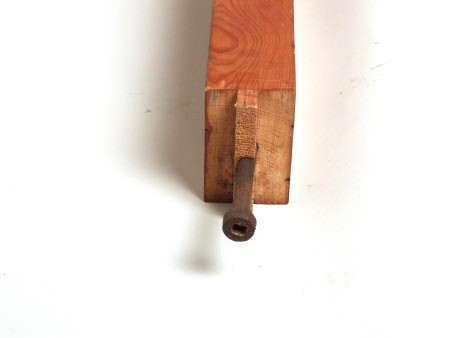Tester bed
Category
Furniture
Date
Unknown
Materials
Mahogany, oak, pine, softwood, brass and metal
Order this imageCollection
Dunham Massey, Cheshire
NT 937835
Summary
A mahogany tester bedstead with: (a) a foot end tester section consisting of a curved, reeded, mahogany Greek revival outer part with carved anthemion leaf corners and central carved cartouche on the front, mounted on a softwood inner part with curved front, with a square metal hook on the underside; (b) a right hand side tester section, as above, the mahogany and softwood pieces detached; (c) a left hand side tester section, as above, also detached as above; (d) plain softwood upper rail to head cloth board with tacks at each end; no (e); (f) two mahogany reeded column foot posts capped with over-lapping leaves; on a square base with pressed brass hinged rosettes covering the two bolt holes on each outer side and additional moulding around the foot; one post is incised with ‘IIII’ and the other with ‘VI’ at the point at which the side or end rails is bolted to the post; (g) two plain wood poles, each with metal cap and spike, and each one slotting into a footpost to extend the height; the join between this upper section and the main section of the post concealed by a mahogany collar with carved foliate decoration (h); shaped foot board frame with band of slim baluster-shaped spindles along the curved top; (i) oak (?) foot end rail with shaped underside, central cut-out for central supporting beam, one rebated top edge, possibly where a canvas would have been tacked, and two bolts at either end. One end is incised ‘V’ and the other ‘VI’; (k) two plain pine side rails, each with two bolt holes at either end (bolts missing), and four screws at each end which would have screwed a wooden castor on metal leg to the rail; (k.ii) has ‘C [?] A / 1916 war on’ handwritten on in pencil; (l) plain pine head end rail with a bolt at each end, possibly later than other bed pieces; (m) two plain, square, pitch (?) pine, tapering head posts, each with a fillet for retaining the headboard (not present) and with metal hooks at the top for hanging textiles.
Provenance
Stamford collection; devised to the National Trust by Roger Grey, 10th Earl of Stamford (1896-1976).
